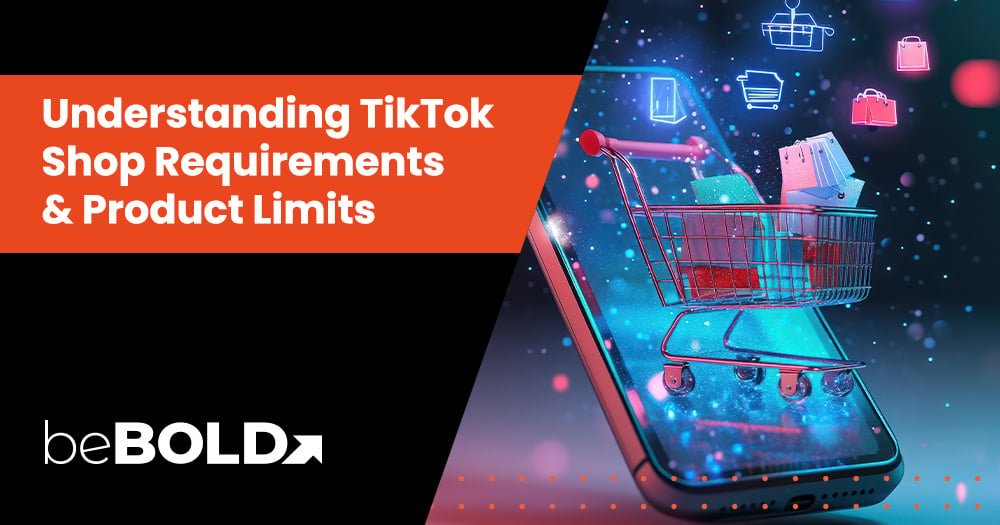Optimizing Amazon product titles is vital for improving your product's visibility and rankings in search results. A well-crafted title not only helps your product stand out but also ensures it aligns with Amazon’s algorithm, making it easier for customers to find. In this guide, we’ll look into some effective strategies to create compelling and keyword-rich product titles that drive clicks and boost sales.
Why does Amazon Product Title Optimization Matter?

A good product title on Amazon is crucial for catching buyers’ attention and boosting sales. It plays a key role in Amazon SEO by using relevant keywords to improve search visibility. Clear, keyword-rich titles help your product stand out, attract more customers, and drive sales.
Impact on SEO (Amazon’s search algorithm (A9))
To boost Amazon SEO, optimize product titles with relevant keywords, brand name, and product type while following A9 algorithm guidelines. Place key terms at the start, avoid keyword stuffing, and use special characters wisely. Well-crafted titles improve visibility, attract buyers, and drive traffic to your product page.
Get your product listings seen by customers
Also read: Amazon A10 Search Algorithm: Everything You Need to Know for 2024
Impact on Customer's Decision Making
A strong product title is key to standing out on Amazon. It provides important details quickly, helping customers decide which product to click. A clear, engaging title that highlights key features and benefits grabs attention, sets your product apart, and encourages buyers to choose it over the competition.
What are the Key Elements of a Great Title?
A great Amazon product title is crucial for both visibility and conversion. Here are the key elements to include:
- Brand Name: Start with the brand for recognition and trust.
- Product Type: Clearly state what the product is.
- Key Features/Specifications: Mention important features, such as size, color, material, or unique functionality.
- Keywords: Use relevant, high-traffic keywords that potential buyers may search for (without keyword stuffing).
- Quantity/Size: If applicable, include the quantity, weight, or size of the product.
- Target Audience: Indicate who the product is intended for, like "for men," "for kids," or "for pets."
- Model/Style: If relevant, mention the model number or style.
- Compliance with Amazon Guidelines: Make sure to follow Amazon's title length and formatting guidelines (e.g., 200 characters max, no promotional phrases like "best deal").
Where Does the Amazon Product Title Appear?

Your Amazon product title is very important for getting the attention of potential customers. It stands out on your product page detail page and gives a quick view of what you are selling. This helps to catch the eye of shoppers who are looking at your listing.
Your title is also shown clearly in Amazon's search engine results pages (SERPs). When customers look for a product, their search terms match the keywords in your title. This affects how relevant your product is and where it ranks. The title is also seen in sponsored product ads.
Amazon's Guidelines for Product Titles
Amazon's rules for product titles ensure a fair and visible marketplace. These include character limits, banned characters, and capitalization rules. Following them is crucial to avoid penalties like reduced visibility or removal from search results.
General Title Requirements
Amazon has certain rules to make sure product titles are clear, easy to read, and give customers a good experience. Additionally, well-designed Amazon product images play a crucial role in enhancing the customer experience. Get to know these rules to create product titles that follow them:
- Character Limit Requirements: Amazon allows product titles to have a maximum of 200 characters, including spaces. It's best to keep titles between 80-100 characters for better readability.
- No promotional phrases: When creating Amazon product titles, avoid using promotional phrases such as "Best Seller," "Top Rated," or "Limited Offer." These phrases do not add value to the title and violate Amazon’s guidelines.
- Formatting and punctuation rules: Capitalize the first letter of each word in the title, except for prepositions, articles, and conjunctions.
Category-Specific Rules
Amazon uses category-specific rules for product titles to ensure consistency and improve search accuracy. For example, clothing titles require details like size and color, while electronics focus on technical specs. Check Amazon's Style Guide for your category to stay compliant.
|
Category |
Title Structure Example |
|
Electronics |
Brand + Model/Series + Key Features + Color |
|
Clothing |
Brand + Department + Style/Form + Product Name + Size/Color |
|
Books |
Title + Author + Format |
|
Home & Kitchen |
Brand + Product Type + Material + Size/Dimensions |
How Non-Compliance Can Lead to Suppressed Listings or Reduced Visibility?

Not following Amazon's title guidelines can have big effects on how well your product sells and how people see it. Amazon uses automated systems to check for rule-breaking all the time. If your listing is marked as non-compliant, it could get suppressed. This means it is taken out of search results, making it unseen by potential buyers.
Other times, not following the rules can lower your product's ranking. This makes it more difficult for shoppers to find you. Keep an eye on your Seller Central account for updates about any policy violations.
Examples of Amazon Product Titles by Category
Here are some examples of Amazon product titles sorted by different popular categories. This will help you write better titles for your Amazon product!
1. Electronics

- Product Type: Wireless Earbuds
- Example: "XYZ True Wireless Earbuds, Bluetooth 5.0 Headphones with Charging Case, Noise Cancellation, Black"
- Recommended Additional Info: Include connectivity features, battery life, and unique features like noise cancellation.
2. Home & Kitchen

- Product Type: Coffee Maker
- Example: "ABC Programmable Coffee Maker, 12-Cup Capacity, Auto Shut-Off, Stainless Steel Carafe"
- Recommended Additional Info: Mention capacity, material, programmable features, and safety options like auto shut-off.
3. Beauty & Personal Care

- Product Type: Face Moisturizer
- Example: "DEF Hydrating Face Moisturizer with Hyaluronic Acid, 1.7 oz, Paraben-Free, for Dry Skin"
- Recommended Additional Info: Include key ingredients, skin type suitability, and product size.
4. Sports & Outdoors

- Product Type: Yoga Mat
- Example: "GHI Non-Slip Yoga Mat with Carrying Strap, 6mm Thick, Eco-Friendly, for Home or Gym Use"
- Recommended Additional Info: Highlight thickness, material, and portability features like a carrying strap.
5. Fashion

- Product Type: Women’s T-Shirt
- Example: "JKL Women’s Cotton T-Shirt, V-Neck, Short Sleeve, Casual, Sizes S-XL, Red"
- Recommended Additional Info: Specify fabric type, fit, style (e.g., casual or formal), and available sizes and colors.
6. Toys & Games

- Product Type: Building Blocks Set
- Example: "MNO 500-Piece Building Blocks Set, Educational Toys for Kids Age 3+, Compatible with Major Brands"
- Recommended Additional Info: Include age range, number of pieces, and compatibility with other popular brands.
7. Books

- Product Type: Fiction Book
- Example: "The Great Adventure by Author Name, Paperback, First Edition, 2023"
- Recommended Additional Info: Mention format (hardcover, paperback, Kindle), edition, and publication year.
8. Automotive

- Product Type: Car Phone Holder
- Example: "PQR Adjustable Car Phone Holder, Dashboard Mount, 360° Rotation, Universal Fit for All Smartphones"
- Recommended Additional Info: Highlight adjustability, mounting type, and compatibility with popular smartphone models.
9. Pet Supplies

- Product Type: Dog Bed
- Example: "STU Orthopedic Dog Bed, Large, Waterproof Cover, Washable, Memory Foam, Grey"
- Recommended Additional Info: Specify size, material, unique features like waterproofing, and care instructions.
10. Health & Wellness

- Product Type: Digital Thermometer
- Example: "VWX Digital Thermometer for Adults and Kids, Fast Reading, Waterproof Tip, Celsius/Fahrenheit"
- Recommended Additional Info: Highlight speed, usability for different age groups, and any special features like waterproofing.
Tips for Optimizing Amazon Product Titles
Optimizing your product titles is something you should keep doing. It takes attention, keyword research, and knowing your audience well. By following these tips, you can create better titles that emphasize the most important details, get more clicks, and help you make more sales.
Your product title is usually the first thing a potential customer sees. Taking time to improve it can give you more visibility, attract more buyers, and lead to more success on Amazon, ultimately helping you gather positive reviews.
1. Keyword Research and Integration

Effective keyword research is very important for a good Amazon product title. You need to know how your customers search for products like yours. This helps you find relevant keywords, which can make your product easier to find. You can use keyword research tools and look at competitor listings to make a list of keywords that have high search volume but low competition.
After you find the right keywords, use them in your title naturally. Make sure it still reads well. Avoid keyword stuffing, which means putting in too many keywords. This can make your title sound spammy and hard to read.
Your goal is to mix keyword relevance with a clear title that appeals to potential buyers.
Also read: Amazon's Restricted Keyword List for 2024 - Product and A+ Content
2. Prioritizing Product Features and Benefits

While keywords are important, it's also key to show off your product's features and benefits, especially in the bullet point section. Think about what matters to your target audience. Instead of just listing details, turn them into benefits that help solve customer problems.
For example, instead of saying "waterproof material," say "durable, weather-resistant design." This will make your title more convincing and attractive for potential buyers.
Keep in mind, there is not much space in your title. So, focus on the most appealing features and benefits that set your product apart from others.
3. Focusing on Clarity and Readability

When making product listing titles, clarity and readability are very important. Customers should quickly understand what your product is and what it offers just by looking at the title. Do not use jargon or complicated words that might confuse potential buyers.
Use short and clear sentences. Make sure the title reads smoothly. You can split longer titles with commas or dashes to make them easier to read.
A simple and clear title improves the customer experience. It also helps search engines find and list your product better.
4. Using Title Casing

Using the right capitalization, especially title case, is important for making your Amazon titles easy to read and look professional. Title case means you capitalize the first letter of each word in your title, but you do not capitalize prepositions, articles, and conjunctions.
This method helps customers scan and understand your titles better. It also meets Amazon's style rules, which makes your listings look professional and reliable.
Always remember to capitalize the first and last words of your title. This is true even if they are prepositions or articles. This also includes brand names, product names, and important keywords.
5. Including Product Nouns

Including product names and free shipping in your title is important for getting noticed by search engines and helping customers. When shoppers look for items on Amazon, they usually type specific names that explain what they want. By adding these names to your title, you increase the chance of your product showing up in search results.
For example, if you sell a coffee maker, use words like "coffee maker," "coffee brewer," or "drip coffee machine." If a product name is part of the brand name, make sure it is at the start of the title.
This approach helps customers find your product easily and strengthens your brand identity in the market.
6. Avoiding Keyword Stuffing

While using relevant keywords is important, do not overdo it with keyword stuffing. This can damage your product's visibility and trust. Keyword stuffing means repeating keywords too much or using unrelated search terms just to boost search rankings. This makes the title sound unnatural and turns off customers.
Amazon's system can find and punish listings with keyword-stuffed titles. This can result in lower visibility, fewer views, or even getting your account banned.
Instead of keyword stuffing, try to use a few relevant keywords that truly explain your product and match what customers are searching for.
7. Using Numerals Instead of Writing Out Numbers

When adding numbers to your Amazon product title, use numerals instead of spelling them out. This small change helps you save valuable character space within the product title limit. For instance, say "12-Piece Set" instead of "Twelve-Piece Set."
Using numerals also makes your title easier to read. Customers can quickly understand important details like quantity, size, or dimensions.
Plus, numerals stand out more than written numbers. This helps make your title easier to scan and digest.
8. Using AI to Generate Title Suggestions
Use the power of artificial intelligence (AI) to create title ideas and make your new listing better for visibility. AI tools can look at a lot of data. This includes how customers search, listings from competitors, and trends in keywords.
By entering your product details and target keywords, these tools give title suggestions based on data. This can help titles connect with potential buyers and do well in search results. They can find relevant keywords, improve the title format, and follow Amazon's rules. You can also consider signing up for a free trial to test these tools effectively.
But remember, it’s important that human marketers check and improve AI suggestions. This is to make sure they are clear, match the brand, and work well overall.
9. Avoiding Excessive Use of Symbols or Capitalization in Amazon Product Listings
When crafting your Amazon product listing, clarity and professionalism are key to attracting buyers and maintaining compliance with Amazon’s guidelines. Overusing symbols (*, %, &, etc.) or unnecessary capitalization in product titles or descriptions can make your listing look unprofessional, spammy, and harder to read.
beBOLD Digital: Transform Your Amazon Listings with Optimized Product Titles
Your product title is the first impression buyers have of your listing—make it count! At beBOLD Digital, we specialize in crafting Amazon product titles that grab attention, boost visibility, and drive sales.
Our team of experts knows the importance of integrating the right keywords, formatting for readability, and highlighting key product features. By tailoring titles to align with Amazon’s algorithm and your target audience, we help you rank higher in search results and improve click-through rates.
Whether you’re selling electronics, fashion, or home essentials, we ensure your product titles communicate value, build trust, and lead to conversions. Don’t let poorly optimized titles hold your business back—partner with BeBOLD Digital to turn every click into a potential sale!
Let’s level up your Amazon game. Contact beBOLD Digital today and watch your products shine in the marketplace.
Conclusion
Optimizing your Amazon product titles is very important for Amazon listing optimization. It helps with search visibility and can influence customer choices. To make your product easier to find and more attractive, use relevant keywords, highlight product features, and keep titles clear and easy to read. Always follow Amazon's rules, like avoiding keyword stuffing and using title casing, to prevent your listings from being hidden. You can also use AI to get title suggestions and steer clear of too many symbols or capital letters. A well-optimized title can improve your rankings and sales on Amazon. This makes it a key part of your product strategy.
Frequently Asked Questions
What impact does the product title have on Amazon search rankings?
The product title has a big effect on Amazon search rankings. Amazon SEO focuses on product titles that have relevant keywords, including the importance of exceptional customer service. When you improve your title with top search terms, you boost your visibility in search results. This attractive visibility can help you gain more potential buyers.
How can I find relevant keywords for my Amazon product title?
To find relevant keywords for your Amazon product title, use Amazon's search bar, check competitors' listings, and explore tools like Helium 10 or Jungle Scout. Also, review customer feedback, utilize Amazon Brand Analytics, and analyze PPC data to discover high-traffic, relevant terms. Incorporating both short-tail and long-tail keywords will boost visibility
Is there a penalty for exceeding the title character limit on Amazon?
Exceeding the character limit for titles can harm your product listing. Amazon has rules about the number of characters allowed, including guidelines for Amazon bullet points. This is to keep listings clear and easy to read. If you go over this limit, you might face penalties. These can include your listing being hidden or having less visibility in search results.
Want to write great titles for your Amazon product listings? Partner with us to optimize your product titles








Comments